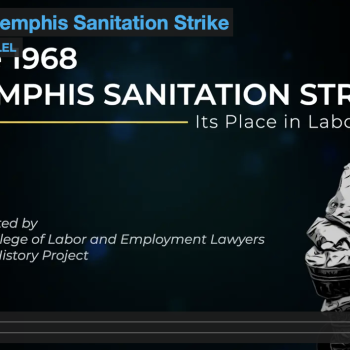I’ve spent the last couple of weeks reading Steven Greenhouse’s Beaten Down, Worked Up: The Past, Present and Future of American Labor. It’s an account of the decline of organized labor, and real struggle we have to imagine strengthening the labor movement today.
On the other hand, it includes inspiring stories, the most inspiring of which is the Las Vegas service industry organizing, and the recent rise of organizing among school teachers in Oklahoma and other states.
As I was reading the book, I realized his list at the end needs to be read more widely. He concludes the book with some of the best approaches we can and should consider for strengthening worker representation and organizing in our nation. So I’ve compiled them here with links. In each instance below, the link takes you to the organizers themselves.
- All of us can advocate for a constitutional amendment over-turning Citizens’ United in order to curb Big Money’s political influence. Learn more about the Move to Amend.
- Expand public financing of elections. As long as campaigns are funded by big money, our laws will continue to favor the interests of corporations over the interests of workers.
- It would be incredibly helpful, in addition to the strengthening of existing unions, to see the formation of a major new national worker group, something similar to the AARP. Call it the AAW.
- We need to see much more reporting on labor issues.
- Organizations like the ACLU and other advocacy groups should expand or create departments that focus on labor issues.
- Join newly forming resources like Coworker.org, which have often been very effective at making for change. The site helps you to start, run, and win campaigns to change your workplace.
- Strengthen the National Labor Relations Act.
- John Lewis has said that workers’ rights are civil rights. Pursue policy change and public advocacy that recognizes and highlights this.
- Allow unions the option for a card check as a way to organize. Card checks is a method for employees to organize into a labor union in which a majority of employees in a bargaining unit sign authorization forms, or “cards”, stating they wish to be represented by the union.
- Encourage your local city or municipality to adopt a “Standards Board.” Seattle’s Standards Board is perhaps the gold standard. Their Domestic Workers Standards Board provides a place for domestic workers, employers, private households, worker organizations, and the public to consider and suggest ways to improve the working conditions of domestic workers.
- Encourage worker and union representation on corporate supervisory boards (like in Germany). One model in the U.S. context is Elizabeth Warren’s Accountable Capitalism Act.
Under this act, the boards of United States corporations must include substantial employee participation: Borrowing from the successful approach in Germany and other developed economies, a United States corporation must ensure that no fewer than 40% of its directors are selected by the corporation’s employees.
- Encourage unions to refocus their energy on growth and in particular growth through organizing. Not all criticisms of existing unions are without merit. Institutional inertia means some unions need to rediscover their organizing roots, and in particular fight back against the corporate oligarchy.
- Labor needs more inspiring messages like Fight for 15.
When I started reading Greenhouse’s book, I was rather pessimistic about the future of organized labor in our nation. National worker justice centers and worker justice centers are on the decline, as is membership in unions.
But the stories we’re seeing on the ground of new forms of organization, and a lot of the grassroots energy around political shifts that center workers’ rights, give me hope. This list gives me tangible strategies to pursue. I hope you find it useful. Thanks to Steven Greenhouse for the inspiration.















